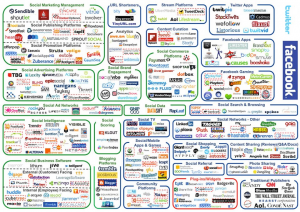— April 27, 2019
Cryptocurrencies were once underground. Then they went through a public craze. Now they’re settling down into a search for their identity as developers and entrepreneurs scout new ways to bring crypto into everyday usage.
Depending on who you ask, cryptos and the blockchain technology underlying them are either the most disruptive or the most overhyped technology of the decade. Looking beyond the sensationalism, though, what will it take for cryptos to become more viable and finally go mainstream?
User-Friendly DApps and Crypto Retail Payments
The internet only saw widespread adoption around the early to mid 1990s, when half of the CDs in the world were America Online free trial discs. By that time, though, the World Wide Web had already been around for almost a decade, and the internet had been in development for even longer. The public needed something user friendly to get them online, and the original AOL and its competitors provided that.
Many blockchain developers are trying to do something similar with decentralized apps, or DApps. These function like mobile apps, but use a blockchain alongside the traditional internet. There have been many innovative DApps built over the last couple of years, as well as platforms to support them. Clovyr was designed by Amber Baldet, who used to develop blockchain tech for JP Morgan Chase. She built Clovyr as a platform to supports all kinds of DApps, but DApps themselves haven’t found a foothold and their use is in decline. Whether some genius developer finally writes the hit DApp, or blockchain takes some other user friendly form, the lay public needs an easy way to utilize blockchain in their everyday lives if it’s ever going to go anywhere.
This is also true of crypto transactions. Ever since the famous pizza index was established, the burning question has been ‘when can we start paying for real world things with crypto?’ And we still don’t have a satisfying answer. Many retailers have started accepting Bitcoin and Ethereum as payment, especially in South Korea and Japan, and their success will be a determining factor. When crypto payments are easier than Venmo, we’ll start seeing them used more widely.
Settling That Famous Volatility
But user-friendliness isn’t even the biggest obstacle. Anyone who’s ever invested in crypto knows the seizing sensation you get watching those valuations bounce around like an ornery four year old. Most cryptos aren’t much older than that, anyway, and we don’t yet have the history to get a clear picture of the underlying forces contributing to their volatile jumps and drops.
If crypto is going to become viable to consumers and traditional investors, someone is going to have to find a way to stabilize them. There are some good minds on this already. Eric Lamison-White, founder of blockchain-based financial intel market the Pareto Network, has developed and patented a system that will let you keep your crypto holding account at a consistent value even as prices fluctuate. It draws from a hedge account of fiat currency, microdosing the crypto account in real time to compensate for value fluctuations. That means that no matter what the market does, your $ 400 in crypto holdings will stay at $ 400, or whatever value you initially set them at.
The utility of a system like this for investors could be game changing. Bringing stability to cryptocurrencies will remove its number one barrier to mainstream adoption.
Innovation-Friendly Regulation
There’s a new bill sitting before Congress called the Token Taxonomy Act. It’s a bipartisan bill written to help the feds better understand digital tokens so they can bring sensible regulation to cryptocurrency where it counts (e.g. to protect against fraud), and leaving regulation out where it’s intrusive (so startups don’t go overseas).
The bill essentially says that digital tokens, or cryptos that represent a tradable asset, should be excluded from the definition of securities. This boundary would be a first step in delineating how the SEC can and cannot regulate cryptos, and also how the IRS taxes them. It will still take a lot more legislating to flesh out a robust and sustainable definition that will support a strong crypto economy, but the authors of the Token Taxonomy Act are off to a good start.
Sensible regulation that protects the consumer and supports innovation will stimulate advances in crypto stability and blockchain user-friendliness. In turn, this will produce a blockchain and crypto ecosystem that’s useful and approachable to the everyday person. That will open the doors to mainstream adoption, and perhaps then we’ll see technological and economic advances to rival the internet boom.
Business & Finance Articles on Business 2 Community
(17)







